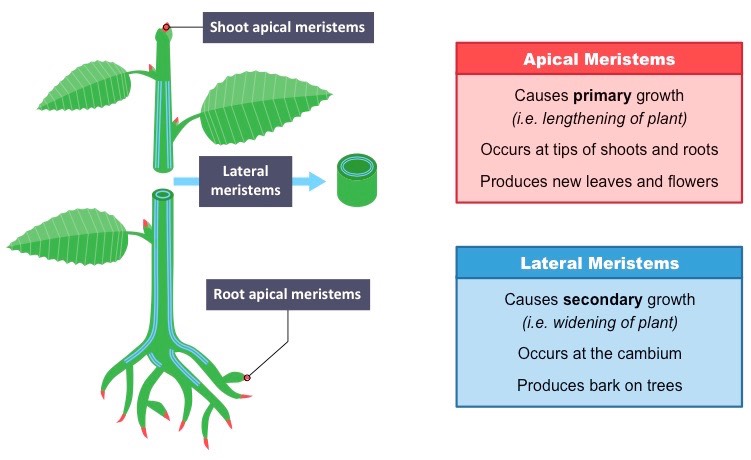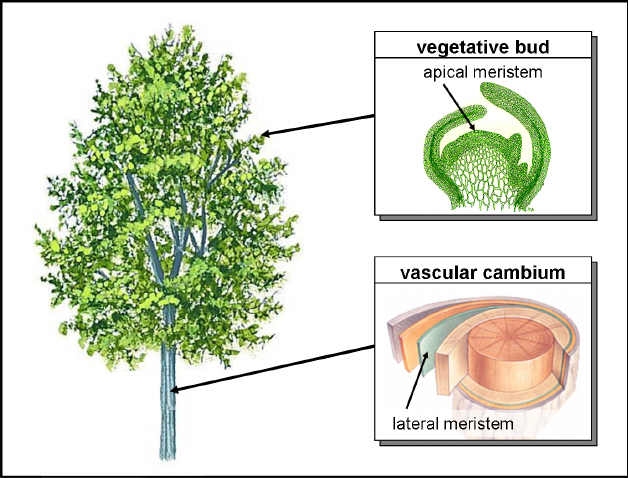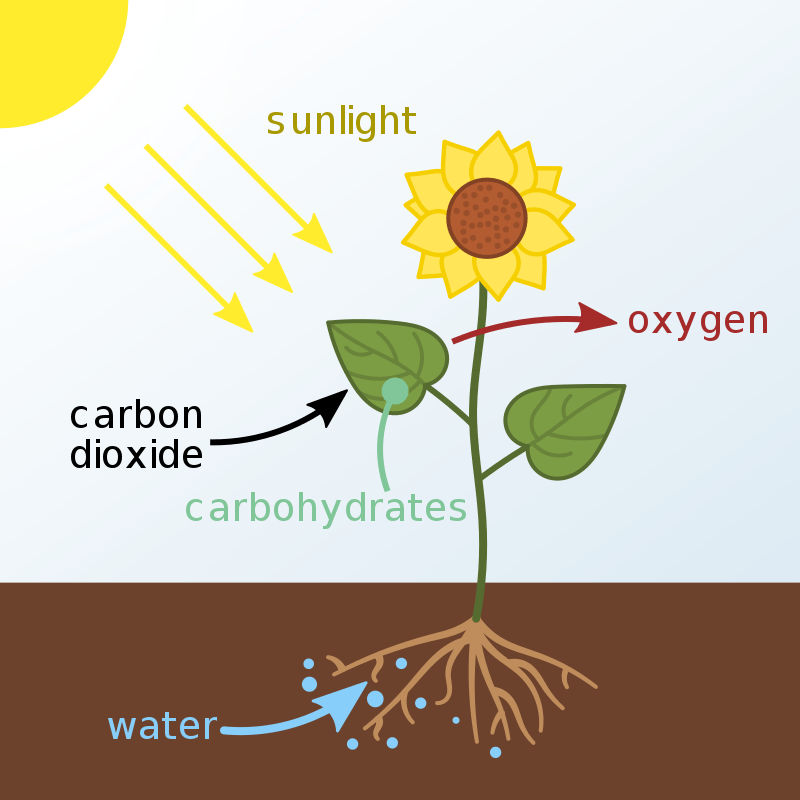Plant Growth Study Guide
Plant Growth
Growth is regarded as one of the most fundamental characteristics of a living being. It can be defined as a permanent and irreversible rise in the sizes of one or all of its parts. Metabolic processes follow growth. For example, the enlargement of a leaf is called growth.
What is Growth and Development in Plants?
The plant begins its life as a single-celled zygote formed by fertilization.
-
It can be described as the expansion of volume or masses of the plants without forming new structures such as organs, tissues, cells, and cell organelles.
-
Growth is associated with cell and tissue specialization production of new individuals through the process of reproduction.
Most plants grow throughout their life. Plants grow through a combination of cell division and cell growth.
-
Cell division increases the number of cells through cell mitosis, and cell growth increases the cell size.
-
The most important thing to help continued growth and cell repair is meristem. It is a type of plant tissue of cells that will continue to differentiate and divide.

How Plants Grow
-
The plants begin their reproductive phase with the growth of fruits and flowers after the completion of the vegetation phase.
-
Growth is an irreversible increase in size, mass, dry weight, cell volume, and permanent organism. This usually happens internally in organisms.
-
Meristematic tissue is key for the growth of plants.
-
Apical meristems are found at the tip of roots and buds. This allows roots and stems to grow in length, while producing leaves and flowers
-
Meristematic tissue in the roots and stem add more and more tissue to the bottom or top, respectively, depending on the placement of the tissue. Often in stems, one meristem becomes dominant, and other stems flow out from the main stem.
-

-
Apical meristems are associated with 3 different types of meristematic tissue and are called primary meristem: protoderm (new epidermis), ground meristem (ground tissue), and procambium (new xylem and phloem)
-
Secondary meristem consists of cambium which produces secondary xylem and phloem (this helps with adding diameter to the plant stem, and provides the wood in trees), and aid in the formation of bark
Is Growth Measurable?
At the cell level, growth refers to the increase in the protoplasm, although it is not easy to measure the difference in the growth. Some parameters that are used to measure growth are
- Dry and fresh weight
- Area
- Volume
- Length
- Cell number
For example, a meristem of maize apical root will help grow more than 18,000 new cells every hour, but in the case of watermelon, it may help grow 4,00,000 cells. Formerly, growth is depicted through cell numbers, and in the latter, growth is expressed as large cells.
Phases of Growth

The growth phases are typically divided into 3 phases, they are:
Meristematic Phase: This is also called the formative phase. It consists of constantly dividing the cells in the apex of the root and the shoot. The meristematic cell regions are rich in protoplasm and have large nuclei. The cell walls are cellulosic and thin containing large plasma dental connections.
This is carried out in two phases:
- Karyokinesis – division of the nucleus
- Cytokinesis – a division of the cytoplasm
Elongation phase: They are placed closer to meristematic zones that depict the elongated phase. There is increased vacuolation, enlargement of cells, and deposition of new cell walls. The cell enlargements could be linear or in any direction. This stage is also accompanied by the differentiation of the cells and their further division.
- Differentiation is a process wherein the cells specialize into physiologically and morphologically different cells. Mature cells further divide and differentiate, leading to dedifferentiation. This generally occurs in the wounded tissues, and the parenchymatous cells are de-differentiated, and the wound is repaired.
Maturation phase: This comes next to the previous phase. The cells in this zone contain their maximum size concerning the thickening of walls and protoplasmic modifications. These cells form different simple and complex tissues that perform different functions.
What are the Conditions for Growth?
-
Water: Required for the formation of protoplasm.
-
Micro and macronutrients soil nutrients: An adequate number of plant nutrients is required for proper growth. The quality and quantity of soil nutrients also affect growth.
-
Temperature: Growth accelerates with an increase in temperature.
-
Light: Light intensity and duration of light influence the physiological processes of a plant.
-
Plant growth regulators: Regulators such as auxins, gibberellins, cytokinins, etc., are added to plants to regulate the growth of plants.

Development in plants includes all the changes occurring during the cycle of life of a plant.
-
Various pathways are used by plants responding to the environment and forming various structures.
-
Leaves of younger plants have different structures when compared to mature plants.
-
Development is thus the total of differentiation and growth that occurs with a plant. Extrinsic as well as intrinsic factors regulate it.
Therefore growth and development are closely related processes occurring in a plant. A plant cannot develop if cells do not grow and develop.
Conclusion
-
Plants grow through a combination of cell division and cell growth. Cell division increases the number of cells through cell mitosis, and cell growth increases the cell size.
-
The growth phases are divided into 3 phases: The meristematic phase, elongation phase, and maturation phase.
-
Conditions required for plant growth: Water, micro and macronutrients soil nutrients, temperature, light, and plant growth regulators.
FAQs
1. What are the 4 stages of plant growth?
The plant life cycle consists of 4 stages which are: seed, sprout, seedling, and adult plant.
2. What are the 5 things that help plants in growth?
Sunlight, proper temperature, moisture, air, and nutrients.
3. What is plant growth and development?
It is the study of the coordination and control of the processes in the cells, organs, and whole plants.
4. What are the types of growth in plants?
- Growth: The process of cell enlargement.
- Differentiation: A process where the cell specializes.
- Apical meristem: Responsible for primary growth where the cells actively divide.
- Secondary growth: Growth occurs from the lateral meristems, which increase the height of the plant.
We hope you enjoyed studying this lesson and learned something cool about Plant Growth! Join our Discord community to get any questions you may have answered and to engage with other students just like you! Don’t forget to download our App to experience our fun, VR classrooms – we promise, it makes studying much more fun! 😎
]]>